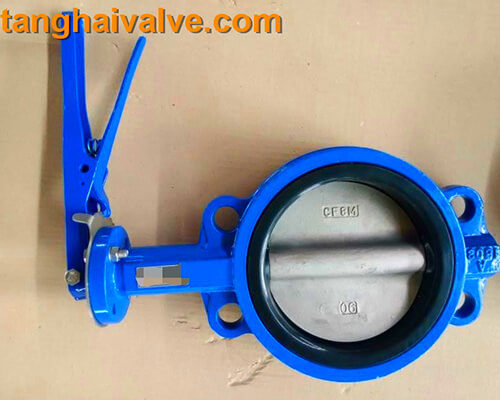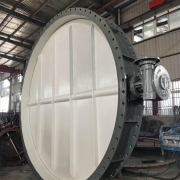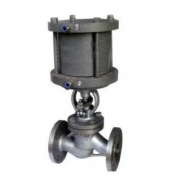Installation requirements for manual butterfly valves
1. Before installing the manual butterfly valve, do not throw it away at random. It needs to be placed in a cool, dry and ventilated environment, and it must be covered well to prevent the valve from being contaminated with dust and other debris, which affects the later use.
2. Before installing on the pipeline, the pipeline must be calibrated first. The positions of the pipelines at both ends must be

wafer-type-butterfly-valve-with-handle-13
consistent, and there must be no deviation. Otherwise, if the manual butterfly valve is installed when the pipeline deviates, it will cause tension on the valve body. Or the impact of rupture.
3. In addition to the calibration of the pipeline, there is another preparation before installation, that is, to clean the manual butterfly valve and its pipeline to ensure the cleanness of the valve and the pipeline, otherwise it will affect the sealing effect of the valve.
4. Manual butterfly valves require frequent manual operations. Therefore, the installation position of the manual butterfly valve is also very particular. The valve installation position must be convenient for personnel operation and future maintenance. It has been demonstrated that the best position for manual valve installation is about 1.2 meters on the operating floor. For valves installed outdoors, cover the valve with some covering to prevent the bad weather from affecting the valve.
5. During installation, the butterfly plate of the manual butterfly valve must be in the closed position to avoid collision damage of the butterfly plate and the pipeline flange, affecting the sealing performance.
6. After the installation is completed, commissioning should be carried out. If the manual butterfly valve has an opening and closing failure during use, it is necessary to find out the cause and eliminate the failure. It cannot be forced to open and close by tapping, prying, or brute force.
The installation requirements for manual butterfly valves are actually very simple. We need to pay attention to the details after the valve is purchased. Of course, the key to the safety of the pipeline and the service life of the valve lies in the correct selection and configuration.
Commonly used butterfly valves are wafer-type butterfly valves and flanged butterfly valves. Wafer type butterfly valve is to connect the valve between the two pipeline flanges with double-headed bolts. Flange type butterfly valve is to have a flange on the valve, and use bolts to connect the two ends of the valve to the pipeline flange. There are four types of butterfly valves in Tanghai Valve company, see below:
- Wafer type butterfly valve (TH-BTV-AW)
- Lug type butterfly valve (TH-BTV-LT)
- U type flange butterfly valve (TH-BTV-UTF)
- Double flange butterfly valve (TH-BTV-DF)
- Fluorine lined PTFE butterfly valve (TH-BTV-PTFE)
- Double eccentric butterfly valve (TH-BTV-DE)
- Triple eccentric butterfly valve (TH-BTV-TE)
Tianjin TanghaiDongyang Valve Co., Ltd. is one of the largest butterfly valve manufacturers in China. It was founded in 2006. Its predecessor was Tanghai Valve Manufacturing Factory. Now we have our own independent R & D, manufacturing, assembly and warehousing workshops; we have professional pre-sale and after-sale technical support and perfect services.
TH Valve is a professional manufacturer of butterfly valve, gate valve, check valve, globe valve, knife gate valve, ball valve with API, JIS, DIN standard, used in Oil, Gas, Marine industry, Water supply and drainage, fire fighting, shipbuilding, water treatment and other systems, with Nominal Diameter of DN50 to DN1200, NBR/EPDM/VITON, Certificates & Approvals: DNV-GL, Lloyds, DNV, BV, API, ABS, CCS. Standards: EN 593, API609, API6D
Related news /knowledge:
Uses and characteristics of manual butterfly valve (4);
Uses and characteristics of manual butterfly valve (3);
Uses and characteristics of manual butterfly valve (2);
What are the main factors affecting valve sealing?

 tanghaivalve.com
tanghaivalve.com tanghaivalve.com
tanghaivalve.com 

 © Copyright 2020 Tianjin Tanghaidongyang Valve Co., Ltd. All Rights Reserved.
© Copyright 2020 Tianjin Tanghaidongyang Valve Co., Ltd. All Rights Reserved. tanghaivalve.com
tanghaivalve.com tanghaivalve.com
tanghaivalve.com